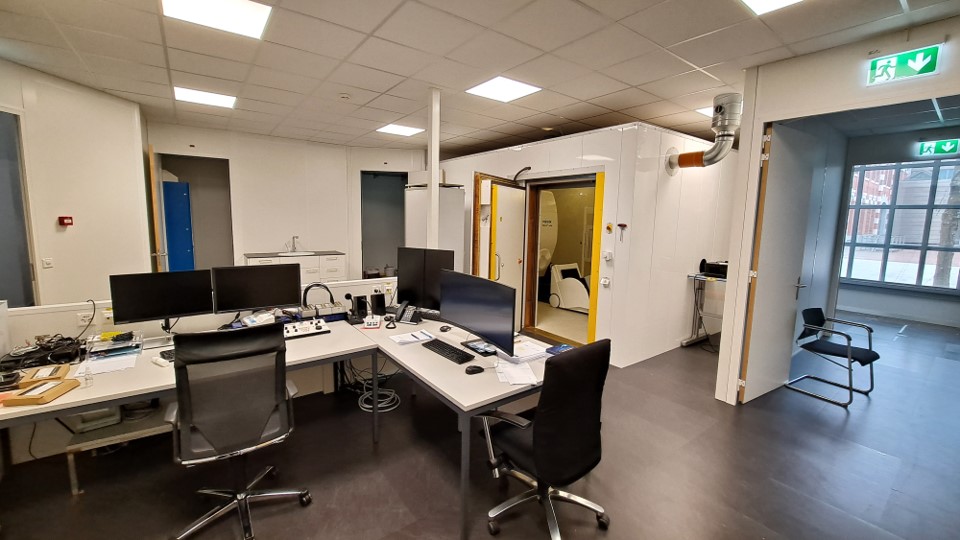
VIDEO INTERVIEW
MEG
FIRST IMPRESSIONS
THE EXPANSE
The Human Neuroscience Platform at Campus Biotech in Geneva has expanded the panel of tools available to the whole scientific and clinical community with the arrival last year of a MEGIN TRIUX™ neo MEG system : https://hnp.fcbg.ch/project/meg-2022/
The MEG is now operational.

In this video, Jonathan Marquis, MEG technician at the Human Neuroscience Platform MEEG-BCI facility, and Prof. Dimitri Van De Ville, full professor at Neuro-X Institute (EPFL) and Department of Radiology (UNIGE), share how their first impressions on the new MEG system installed at Campus Biotech.
Watch the full video here:
Advantages of MEG and the MEGIN TRIUX™ neo
Compared to MRI, the system is completely noiseless. Compared to EEG, MEG recordings are easier to set up.
This helpful combination will help specific populations and more generally people that don’t cope well with MRI or EEG experiments to participate to neuroscience studies at Campus Biotech. As a result, it is particularly interesting for children, and the MEGIN TRIUX™ neo comes equipped with all the necessary accessories for pediatric populations, whether they prefer to sit or lie during the experiment. We expect a strong benefit for populations with autistic spectrum disorders or Down syndrom.
MEG: a clean signal
Compared to EEG, the signal that we measure – the magnetic flux – is much less influenced by lateral smoothing due to the skull and scalp, and the resulting source localization – answering the question “where does the signal orginate inside the brain?” – is a lot easier. As a result, MEG has proven itself a formidable tool to detect the focus of epileptic lesions in a completely non-invasive manner prior to surgery. In Neuroscience, we can use MRI to obtain precise structural data of the brain, and map the MEG activity onto it to combine both impressive spatial and temporal precision on the brain activity signal.
A technological wonder
MEG relies on the use of extremely sensitive magnetic sensors that need to be cooled down with liquid helium. This used to be a strong burden on the technology due to helium prices and lack of availability. However, the new MEGIN TRIUX™ neo is a new-generation machine that benefits from 100% helium recycling, making the life of researchers and technicians easier and the system a lot more sustainable. In addition, the system is shielded from all types of electromagnetic inteferences inside a dedicated vault. As a result, only the purest and cleanest brain data will be recorded.
A tool for language and cognition
Many applications will benefit from MEG. In the clinic, they include precise mapping of epileptic foci prior to surgery, as wel as functional localization of various brain areas to avoid when planning tumor extraction, or better understanding aphasia, autism, and schizophrenia.
Cognitive studies will be able to use plenty of stimulation protocols, including tactile, audio, visual (using 2d or 3d projectors) to reliably map brain function using MEG.
MEG is essential for the study of language – a dynamic system that requires understanding on-line precise computations. MEG is indeed especially sensitive to signals that come from sulci, so it is ideal for exploring for instance the auditory cortex, and all functions that take place in regions that are not tangential to the cortical surface. We welcome the strong ties between the HNP and with the National Center of Competence in Research NCCR Evolving Language to make the best out of MEG technology to that aim.
In the long term, having an MEG platform in Geneva close to the HUG will also be an immense advantage as neuroscientists will be able to study patients who have implanted electrodes and understand the exact nature of these signals in the context of language processing.
